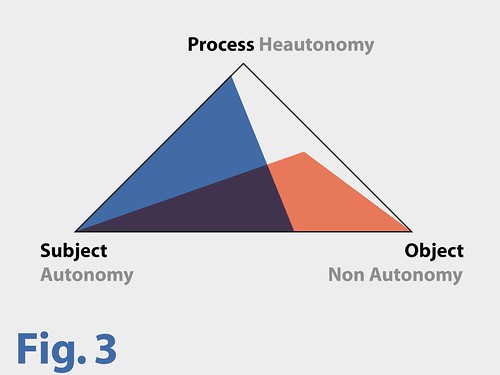Post-autonomous Art
Post-autonomous art describes a mode of making art at a time when the artist's presumed autonomy has become rather problematic. A post-autonomous mode of production is no longer concerned with creating singular works of art attributable to a particular artist or author. Instead, a post-autonomous art practice employs a collaborative or dialogical mode of production, for example, via face-to-face or online dialogues, conversations or events, wikis, salons, bulletin boards, chat rooms, or collaborative visual editing environments.
The German Conceptual artist Michael Lingner proposed the notion of Post Autonomy. The aim of post-autonomous artistic production is not (or not primarily) to create objects (electronic or physical) or to document the traces of the productive process. Rather, it is to support and embody a political transformation whereby the human participants subscribe to an open ended mutual learning process and define and activate a productive space outside capitalism and its competitive mode of production.
History of post-autonomous art
The history of post-autonomous art can be seen in various practices for which one or several of the criteria below hold true:
-
Conscious control of the artefact / outcome is relinquished or weakened. The surrealists experimented with the unconscious in automatic writing; a number of conceptual artists used random events as input to the productive process; dialogical encounters contributed to the work (see, for example, some works of Stanley Brown or Douglas Huebler); choices of performers and improvisation influence the result, for example, in a (musical) performance where the players can chose which module of music to play.
-
The process of production itself is considered as constituting the art, not any resulting products or documents. This was very common in various conceptual art practices in the Sixties. The role of documentation and of documents (e.g. of performances) as quasi artefacts undermined this somewhat as conceptual artists needed objects for the gallery system. For some artists such as Allan Kaprow, a dissolution of the boundary separating life and art led to the idea of an invisible art practice.
-
Practices are considered open-ended, i.e., no pre-conceived result is intended. Instead, the initial boundaries or rules of some process are defined and the actual development is left to the interaction of participants. Censorship issues can become important in this context.
-
There is no narrow focus on the aesthetic experience as in most other art forms. Rather, post-autonomous art explicitly deals with social, political and economic issues as well a with the communication, media, race and gender issues discussed in cultural studies. This also links to the practice of the situationists who intended to abolish the notion of art as a separate, specialized activity and aimed to transform it so it became part of fabric of everyday life.
Examples of post-autonomous art
The Netzkunstwoerterbuch (in German) is a wiki dictionary of terms relevant for a conversational / dialogical art practice. It may count as post-autonomous work of art.
Fallen Fruit is an activist art collaboration on "public fruit" which investigates the interface of urban life and agriculture (in the form of fruit). It incorporates aspects of 'pataphysics and the Situationist International.
See also
Post Autonomy a blog discussing Post Autonomous practices
A critique of the concept of post-autonomous art has been attempted in Some provisional notes on post-autonomous practice.
The Original Wikipedia Article by Detlev Fischer has been deleted. See the Discussion:
http://en.wikipedia.org/wiki/Wikipedia:Articles_for_deletion/Post-autono...
- Schreib einen Kommentar
- 29 Herzen

